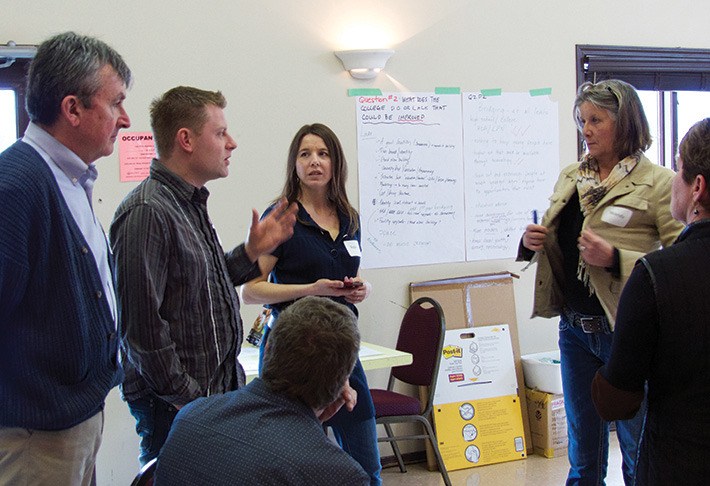Twenty-five businesses met for an Invermere Campus College of the Rockies (COTR) Stakeholder planning session on April 1st at the Columbia Valley Chamber of Commerce Lions’ Hall to perform a SWOT analysis of the school’s strengths and weaknesses. A SWOT analysis, or matrix, is a planning method used to evaluate the strengths, weaknesses, opportunities, and threats.
According to Invermere campus manager Doug Clovechok, those who attended the meeting covered all the demographics.
“We sought different demographics. Everybody was represented in the room… we were absolutely thrilled with the turnout, it was awesome,” said Mr. Clovechok of the enthusiastic participants. “The important thing about these sessions is that it allows us to be vulnerable. That’s important, the ability to assess the areas that need to be improved upon.”
The support of the community was incredible, according to Mr. Clovechok, who also said of the SWOT analysis: “we don’t think of these areas as weaknesses, we think of them as opportunities. It’s an opportunity to let people know more of what we do.”
Of the “opportunities” noted at the meeting, expanding the campus was a big area of concern that arose.
“One of our challenges is space-related,” Mr. Clovechok said.
The campus is currently attached to David Thompson Secondary School. Participants acknowledged the maturity that comes with separating college life from high school life is missing with the current setup, and that the image of the college would be greatly enhanced with a new building, which would have the potential to attract graduates on a different level.
“Overall, it was good to get perspective on the college from an internal versus community viewpoint. It was great to create a safe environment where the community and college employees could contribute,” said COTR president David Walls, who attended the meeting.
“It was really neat to see the cross-section of business owners, managers, and staff that took part in a discussion around what the college is doing; including what they do well, what they can improve on, and what threats and opportunities are present,” said Valley Echo/Columbia Valley Pioneer publisher Rose-Marie Fagerholm, who is also Past President of the Columbia Valley Chamber of Commerce.
The three-hour session left an impression on Ms. Fagerholm who stated “we’re all very busy people and the fact that many people took so much time out of their day to give feedback on the local college was nice to see.”
One of the strengths noted at the meeting was COTR’s ability to reach out to the community, she said, and creating a niche for the college or a brand would attract other students.
“Whether it’s attracting foreign students, out of province students, or retaining local students, their presence would reverberate throughout the community.”
According to Ms. Fagerholm, the entire infrastructure of the valley would be improved with the arrival of these students, sort of a trickle down effect.
“Shopping, healthcare, and putting down roots here; the presence of these students would bode well for everybody,” she said.
Story by Erin Knutson
